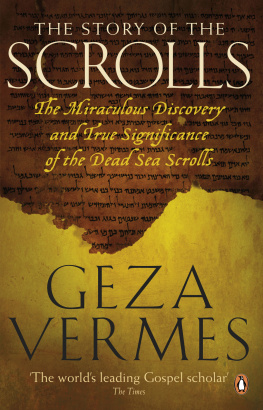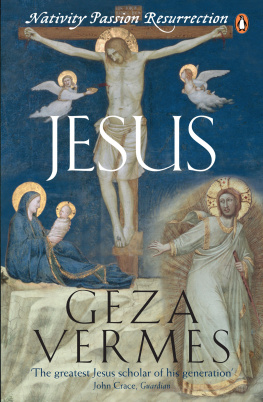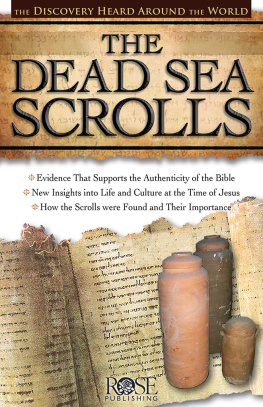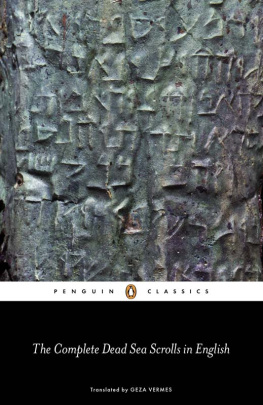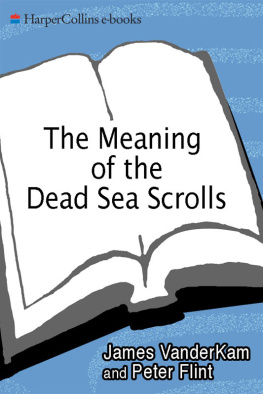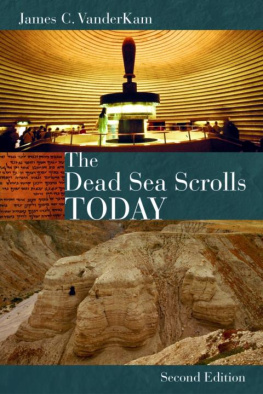GEZA VERMES
The Complete Dead Sea Scrolls in English
Revised Edition

PENGUIN BOOKS
Contents
Chronology
IV. The Religious Ideas of the Community
Note on This Translation
A. THE RULES
Remonstrances (before Conversion?) (4Qa)
B. HYMNS AND POEMS
Hymn of Glorification A and B (4Q, fr. 11 4Q471b)
C. CALENDARS, LITURGIES AND PRAYERS
A Liturgical Work (4Q3923)
D. HISTORICAL AND APOCALYPTIC WORKS
A Messianic Apocalypse (4Q)
E. WISDOM LITERATURE
Beatitudes (4Q)
F. BIBLE INTERPRETATION
Catenae or Interpretation of Biblical Texts on the Last Days (4Q, 4Q)
G. BIBLICALLY BASED APOCRYPHAL WORKS
List of Netinim (4Q)
H. MISCELLANEA
Two Qumran Ostraca
I. APPENDIX
PENGUIN BOOKS
THE COMPLETE DEAD SEA SCROLLS IN ENGLISH
Geza Vermes was born in Hungary in 1924. He studied in Budapest and in Louvain, where he read Oriental history and languages and in 1953 obtained a doctorate in theology with a dissertation on the historical framework of the Dead Sea Scrolls. From 1957 to 1991 he taught in England at the universities of Newcastle upon Tyne (195765) and Oxford (196591). He is now Professor Emeritus of Jewish Studies and Emeritus Fellow of Wolfson College, but continues occasionally to teach at the Oriental Institute in Oxford. He has edited the Journal of Jewish Studies since 1971, and since 1991 he has been director of the Oxford Forum for Qumran Research at the Oxford Centre for Hebrew and Jewish Studies. Professor Vermes is a Fellow of the British Academy and of the European Academy of Arts, Sciences and Humanities. He is the holder of an Oxford D.Litt. and of honorary doctorates from the universities of Edinburgh, Durham, Sheffieldand the Central European University of Budapest.
His first article on the Dead Sea Scrolls appeared in 1949 and his first book, Les manuscrits du dsert de Juda, in 1953. It was translated into English in 1956 as Discovery in the Judean Desert. He is also the author of Scripture and Tradition in Judaism (1961, 1973, 1983); Jesus the Jew (1973, 1976, 1981, 1983); The Dead Sea Scrolls: Qumran in Perspective (1977, 1981, 1982, 1994); Jesus and the World of Judaism (1983, 1984); The Religion of Jesus the Jew (1993); and (with Martin Goodman) The Essenes According to the Classical Sources (1989); (with Philip Alexander) Discoveries in the Judaean Desert XXVI (1998) and (also with Philip Alexander) XXXVI (2000); An Introduction to the Complete Dead Sea Scrolls (1999, 2000); The Dead Sea Scrolls (The Folio Society, 2000); The Changing Faces of Jesus (2000); TheAuthentic Gospel of Jesus (2003), Jesus in his Jewish Context (2003), The Story of the Scrolls (2010) and Jesus: Nativity Passion Resurrection (2010). He played a leading part in the rewriting of Emil Schrers classic work The History of the Jewish People in the Age of Jesus Christ (197387). His autobiography, Providential Accidents (1998), contains a vivid personal account of a life-long involvement with the Dead Sea Scrolls.
For M and I with love
and in loving memory of P
Preface
In the spring of 1947 a young Arab shepherd climbed into a cave in the Judaean desert and stumbled on the first Dead Sea Scrolls. For those of us who lived through the Qumran story from the beginning, the realization that all this happened half a century ago brings with it a melancholy feeling. The Scrolls are no longer a recent discovery as we used to refer to them, but over the years they have grown in significance and now the golden jubilee of the first manuscript find calls for celebration with joy and satisfaction. Following the revolution which liberated all the manuscripts in 1991 until that moment a large portion of them was kept away from the public gaze every interested person gained free access to the entire Qumran library. I eagerly seized the chance and set out to explore the whole collection. Today, after four and a half years of intense study, I feel confident that I canpresent the complete canvas of the Dead Sea Scrolls and disclose to the many interested readers the message of these ancient manuscripts about ancient Judaism and to a more limited extent about early Christianity.
In its successive editions this book has endeavoured to serve a dual audience of scholars and educated lay people. Over the years it has grown in size it contained only 255 pages in 1962 and I trust also in its grasp of the subject. While this translation of the non-biblical Scrolls does not claim to cover every fragment retrieved from the caves, it is complete in one sense: it offers in a readable form all the texts sufficiently well preserved to be understandable in English. In plain words, meaningless scraps or badly damaged manuscript sections are not inflicted on the reader. Those who wish to survey texts consisting only of broken lines, or of single letters and half-letters, should turn to the official series Discoveries in the Judaean Desert, in which every surviving detail is put on record.
In addition to the English rendering of the Hebrew and Aramaic texts found in the eleven Qumran caves, two inscribed potsherds (ostraca) retrieved from the Qumran site and two Qumran-type documents discovered in the fortress of Masada, and brief introductory notes to each text, this volume also provides an up-to-date general introduction, outlining the history of fifty years of Scroll research and sketching the organization, history and religious message of the Qumran Community. A Scroll catalogue, an essential bibliography and an index of Qumran texts are appended to facilitate further study and research.
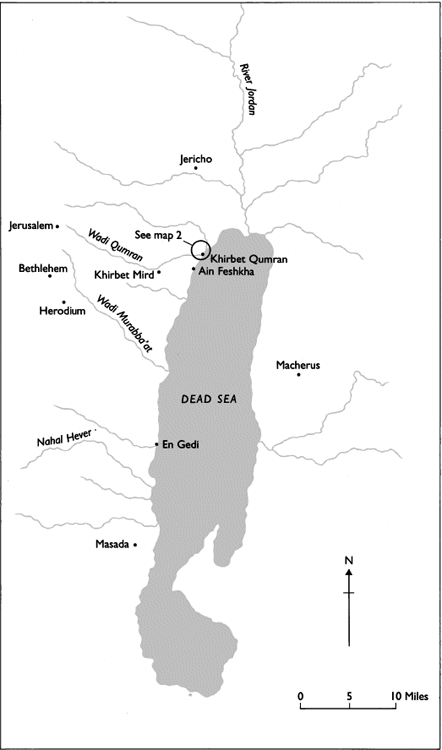
Map 1: The area surrounding the Dead Sea, showing Qumran
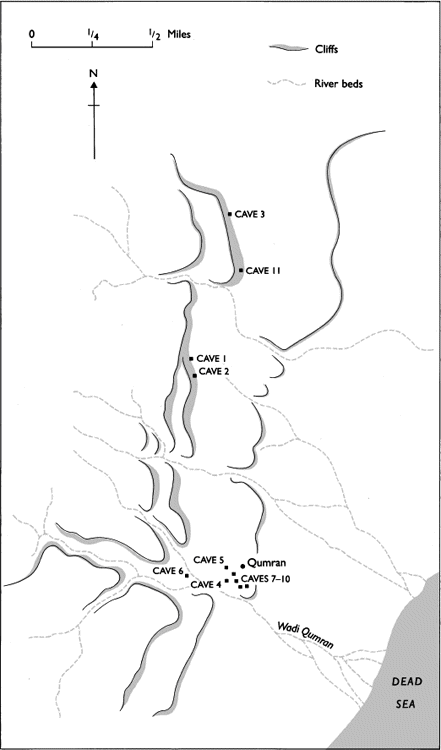
Map 2: The Caves of Qumran
Has the greatly increased source material substantially altered our perception of the writings found at Qumran? I do not think so. Nuances and emphases have changed, but additional information has mainly helped to fill in gaps and clarify obscurities; it has not undermined our earlier conceptions regarding the Community and its ideas. We had the exceptionally good fortune that all but one of the major non-biblical Scrolls were published at the start, between 1950 and 1956: the Habakkuk Commentary (1950), the Community Rule (1951), the War Scroll and the Thanksgiving Hymns (1954/5) and the best-preserved columns of the Genesis Apocryphon (1956). Even the Temple Scroll, which had remained concealed until 1967 in a Bata shoebox by an antique dealer, was edited ten years later. The large Scrolls have served as foundation and pillars, and the thousands of fragments as building stones, with which the unique shrine of Jewish religion andculture that is Qumran is progressively restored to its ancient splendour.
Finally, it is a most pleasant duty to express my warmest thanks to friends and colleagues who helped to make this book less imperfect than it might otherwise have been. First and foremost, I wish publicly to convey my gratitude to Professor Emanuel Tov, editor-in-chief of the Dead Sea Scrolls Publication Project, for his generosity in answering queries and assisting in every possible way. My very special thanks are due also to Professor Joseph M. Baumgarten, who allowed me to consult his edition of the Damascus Document fragments from Cave 4 prior to their publication in




